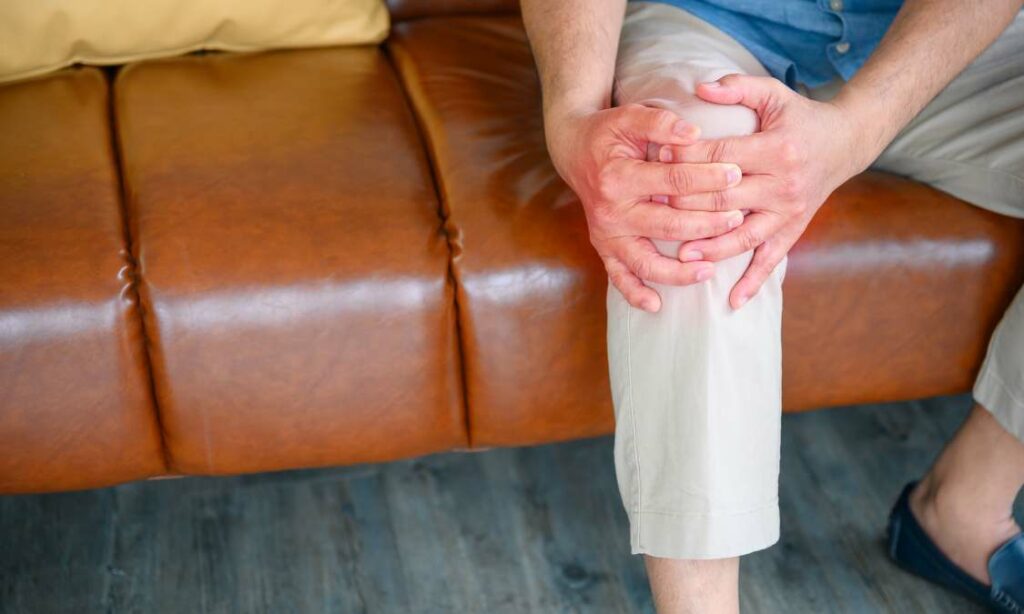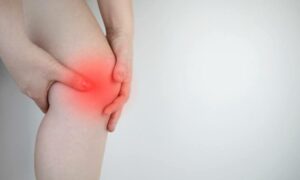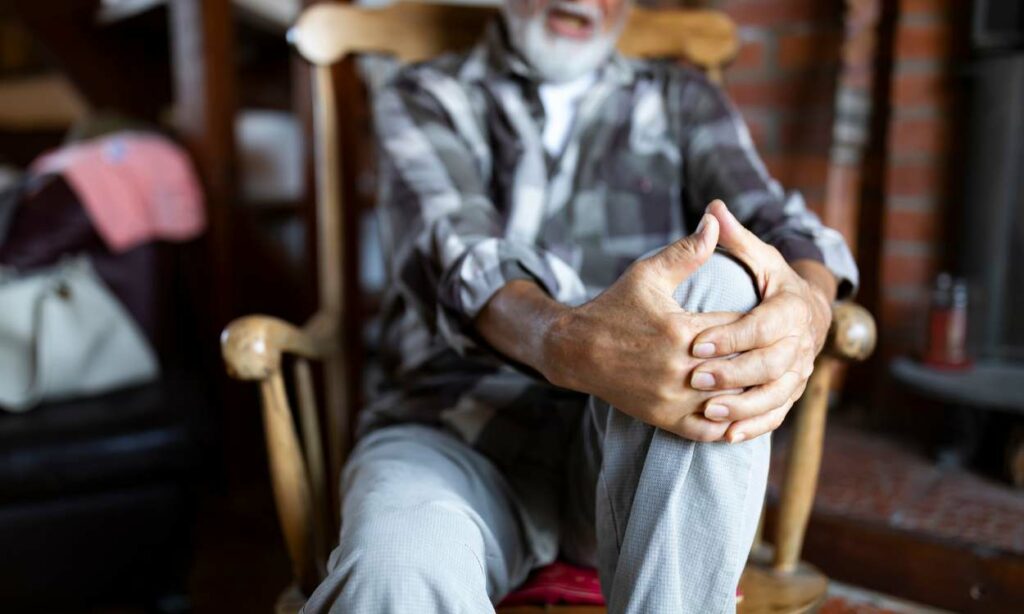Every step you take is a symphony of muscles, bones, and joints working in harmony, with the knee at its epicenter. But when that rhythm is disrupted by the persistent gnawing of chronic knee pain, life’s most straightforward tasks can become monumental challenges. The pain is more than just a physical sensation; it seeps into your daily activities, your passions, and even your quiet moments of rest. Dive deep with us as we unravel the causes, treatments, and solutions to cope with chronic knee pain, bringing harmony back to your every step.
Contents
Common Causes of Chronic Pain In Your Knee

Navigating the intricacies of chronic knee pain can often feel like piecing together a complex puzzle. While each individual’s experience with knee pain is unique, understanding its most prevalent causes can provide clarity on the road to relief. Let’s delve into some of the predominant conditions responsible for the relentless aching in the knees.
Osteoarthritis
Perhaps the most common form of arthritis in the knee, osteoarthritis is the result of wear and tear over time. It arises when the protective cartilage that cushions the ends of your bones wears down, leading to pain, swelling, and reduced range of motion.
Rheumatoid Arthritis
A chronic inflammatory disorder, rheumatoid arthritis affects the lining of the joints, leading to painful swelling that can eventually result in joint deformity and erosion of the bone.
Tendinitis
Athletes and the physically active might be familiar with the pain of tendinitis. It refers to the inflammation of the tendons – the thick cords that attach our muscles to bones. In the knee, the patellar tendon, which connects the kneecap to the shinbone, is often affected, leading to pain at the front of the knee, especially when jumping or kneeling.
Bursitis
The small sacs of fluid cushioning the outside of your knee joint are known as bursae. Overuse, prolonged kneeling, or trauma to the knee can irritate these sacs, leading to bursitis, which manifests as swelling, warmth, and pain in the affected area.
Ligament Injuries
The knee has multiple ligaments that provide stability. Overstretching or tearing any of these ligaments, such as the anterior cruciate ligament (ACL), can cause pain, swelling, and instability.
Meniscal Tears
The meniscus is a rubbery, C-shaped disc that cushions your knee. Sudden twisting or other factors can tear the meniscus, leading to pain, swelling, and a feeling of your knee “giving way.”
Each of these conditions has its distinct set of symptoms and triggers, but they all converge on one shared experience: persistent knee pain. Recognizing the signs and seeking early intervention can pave the way for a smoother recovery and a life with reduced pain.
Signs and Symptoms to Watch For
 The knee is a complex structure, and its persistent discomfort can manifest in a variety of symptoms. Recognizing these symptoms is the first step in understanding the extent of the problem and seeking appropriate intervention. Beyond the general ache, there are certain red flags that shouldn’t be ignored, as they might suggest a more severe condition. Here’s what you need to be on the lookout for:
The knee is a complex structure, and its persistent discomfort can manifest in a variety of symptoms. Recognizing these symptoms is the first step in understanding the extent of the problem and seeking appropriate intervention. Beyond the general ache, there are certain red flags that shouldn’t be ignored, as they might suggest a more severe condition. Here’s what you need to be on the lookout for:
- Persistent Swelling: Occasional swelling after an intense workout or minor injury is normal. However, if your knee remains swollen for days, or if the swelling recurs frequently, it could be indicative of an underlying issue.
- Reduced Range of Motion: Struggling to fully extend or bend your knee? Stiffness and a limited range of motion might be more than just age-related; they could be signs of arthritis or other inflammatory conditions.
- Audible Sounds: While occasional popping sounds in the knee can be benign, consistent or loud crunching, clicking, or grinding noises might be signs of cartilage wear and tear or osteoarthritis.
- Heat and Redness: Warmth and redness around the knee, especially when accompanied by pain and swelling, could be signs of an infection or an inflammatory condition like rheumatoid arthritis.
- Night-time Pain: If knee pain keeps you awake at night or worsens when you’re resting, it could indicate a more severe condition.
- Visible Deformities: Any visible change in the structure or alignment of the knee, such as bowing in or out, warrants immediate attention.
It’s essential to listen to your body. Chronic knee pain is not just a mere inconvenience; it’s a signal that something might be amiss. Recognizing these signs and seeking timely medical intervention can be the key to preventing further complications and ensuring optimal knee health.
How Can You Treat This Pain?

Living with chronic knee pain can be debilitating, but there’s hope. Before considering invasive procedures, there are several non-surgical treatments that have proven effective in alleviating discomfort and improving knee functionality. Here’s a breakdown of these treatments:
Physical Therapy
A cornerstone of non-surgical knee pain management, physical therapy involves tailored exercises that strengthen the muscles around the knee, enhancing stability and reducing pain. Trained therapists can also teach you techniques to reduce strain on your knee during daily activities.
Medication
Over-the-counter pain relievers, such as ibuprofen or naproxen, can help reduce pain and inflammation. If over-the-counter options aren’t effective, your doctor might prescribe stronger pain medications, anti-inflammatory drugs, or even injections with corticosteroids or hyaluronic acid.
Weight Management
Carrying extra weight puts added stress on your knee joints, exacerbating pain and speeding up wear-and-tear. Adopting a balanced diet and engaging in low-impact exercises can help you shed those extra pounds, offering significant relief.
Knee Braces or Orthotics
Braces can help stabilize the knee, redistribute weight, and relieve pain. They come in various forms, from simple sleeve-like braces to more rigid ones with hinges. Orthotic shoe inserts can also help by altering the way you walk, reducing the strain on your knee.
Heat and Cold Therapy
Applying ice can reduce inflammation and numb the area, while heat can relax and loosen tissues, reducing pain. It’s crucial to know when to use which: ice is usually best for acute pain after activity, while heat can be soothing for more chronic conditions.
Injections
Beyond corticosteroids, newer therapies involve injecting platelet-rich plasma (PRP) or stem cells into the knee, aiming to reduce inflammation and promote healing.
Alternative Therapies
Treatments such as acupuncture, chiropractic care, and even certain dietary supplements (like glucosamine and chondroitin) have been explored as potential aids in managing knee pain.
Activity Modification
Sometimes, it’s the simplest changes that can bring about the most relief. Switching to low-impact exercises, taking frequent breaks, and using ergonomic tools can help reduce the strain on your knees.
Before committing to any treatment, it’s crucial to consult with healthcare professionals who can guide you on the most appropriate course of action based on your specific condition and needs.
Tips and Strategies to Prevent Chronic Knee Pain

As we delve deeper into understanding chronic knee pain, it’s not just about identifying and treating the problem. Prevention plays a pivotal role. Let’s explore some essential strategies to keep chronic knee pain at bay.
- Maintain a Healthy Weight: Every extra pound adds significant stress to the knee joints. Shedding excess weight can greatly reduce the risk of knee pain and slow the progression of existing conditions.
- Warm-Up Before Exercise: A proper warm-up increases blood flow to the muscles and makes them more flexible, reducing the risk of injury.
- Wear Proper Footwear: Shoes with good arch support and a slightly raised heel can help in distributing weight evenly, reducing strain on the knees.
- Avoid High-Impact Activities: Limit or modify activities known to aggravate the knee, such as jumping or heavy lifting.
- Use Knee Pads: If your activities involve kneeling or potential impact, protective padding can help prevent injuries and discomfort.
- Practice Good Posture: Proper alignment reduces stress on all joints, including the knees. Ensure your body mechanics are correct when sitting, standing, or moving.
- Stay Hydrated: Cartilage in the knees requires hydration to stay supple. Drinking adequate water supports joint health.
- Listen to Your Body: If you start feeling pain during an activity, stop or modify the action. Pushing through pain can lead to more significant injuries.
- Incorporate Anti-Inflammatory Foods: Foods like turmeric, ginger, berries, and green tea have natural anti-inflammatory properties that can help keep joint pain at bay.
By integrating these tips into your daily routine, you can actively work towards preserving your knee health and preventing the onset or progression of chronic pain.
Conclusion
In the journey to understand and combat chronic knee pain, knowledge, and timely intervention are crucial. By recognizing the causes and implementing preventive measures, one can significantly enhance their quality of life. Remember, enduring the pain isn’t the solution. So, if you’re experiencing knee pain, physical therapy for knee pain at PhysioMantra can be your path to relief. Don’t wait. Book an online physical therapy session today and take the first step towards a pain-free life.



